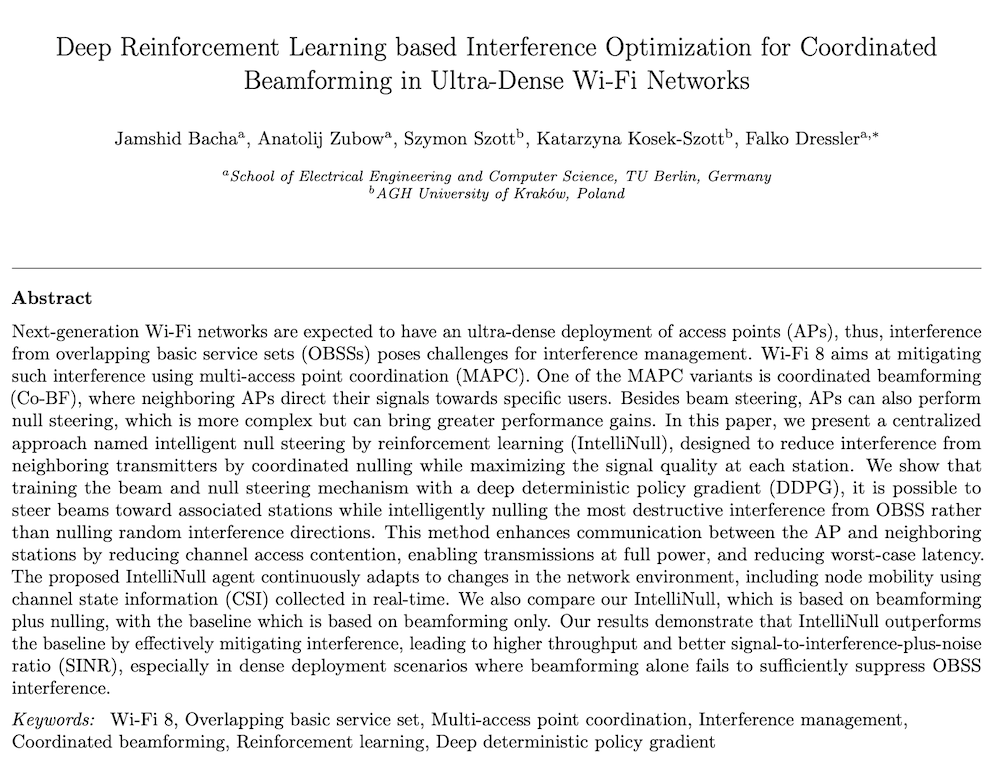Literature Database Entry
kuestner2020simulation
Anke Kuestner, Lukas Stratmann, Regine Wendt, Stefan Fischer and Falko Dressler, "A Simulation Framework for Connecting In-Body Nano Communication with Out-of-Body Devices," Proceedings of 7th ACM International Conference on Nanoscale Computing and Communication (NANOCOM 2020), Virtual Conference, September 2020.
Abstract
We present a novel simulation framework bridging the gap between in-body nano communication and out-of-body body area network (BAN). We assume nanobots freely flowing within the blood system. Their mobility can be modeled using the BloodVoyagerS module. The communication channels are modeled using proximity (nanobot to nanobot), proximity and ultrasonic communication (nanobot to a gateway), and standard IEEE 802.15.4 for BAN communication. In our simulation framework, we rely on ns-3 to model all the three independent communication channels to, for the first time, study the end-to-end communication performance from nanobots to a connected host system. We consider the system a fundamental basis for more advanced studies of such integrated and very heterogeneous communication systems.
Quick access
Original Version ![]() (at publishers web site)
(at publishers web site)
Authors' Version ![]() (PDF on this web site)
(PDF on this web site)
BibTeX ![]()
Contact
Anke Kuestner
Lukas Stratmann
Regine Wendt
Stefan Fischer
Falko Dressler
BibTeX reference
@inproceedings{kuestner2020simulation,
author = {Kuestner, Anke and Stratmann, Lukas and Wendt, Regine and Fischer, Stefan and Dressler, Falko},
doi = {10.1145/3411295.3411308},
title = {{A Simulation Framework for Connecting In-Body Nano Communication with Out-of-Body Devices}},
publisher = {ACM},
address = {Virtual Conference},
booktitle = {7th ACM International Conference on Nanoscale Computing and Communication (NANOCOM 2020)},
month = {9},
year = {2020},
}
Copyright notice
Links to final or draft versions of papers are presented here to ensure timely dissemination of scholarly and technical work. Copyright and all rights therein are retained by authors or by other copyright holders. All persons copying this information are expected to adhere to the terms and constraints invoked by each author's copyright. In most cases, these works may not be reposted or distributed for commercial purposes without the explicit permission of the copyright holder.
The following applies to all papers listed above that have IEEE copyrights: Personal use of this material is permitted. However, permission to reprint/republish this material for advertising or promotional purposes or for creating new collective works for resale or redistribution to servers or lists, or to reuse any copyrighted component of this work in other works must be obtained from the IEEE.
The following applies to all papers listed above that are in submission to IEEE conference/workshop proceedings or journals: This work has been submitted to the IEEE for possible publication. Copyright may be transferred without notice, after which this version may no longer be accessible.
The following applies to all papers listed above that have ACM copyrights: ACM COPYRIGHT NOTICE. Permission to make digital or hard copies of part or all of this work for personal or classroom use is granted without fee provided that copies are not made or distributed for profit or commercial advantage and that copies bear this notice and the full citation on the first page. Copyrights for components of this work owned by others than ACM must be honored. Abstracting with credit is permitted. To copy otherwise, to republish, to post on servers, or to redistribute to lists, requires prior specific permission and/or a fee. Request permissions from Publications Dept., ACM, Inc., fax +1 (212) 869-0481, or permissions@acm.org.
The following applies to all SpringerLink papers listed above that have Springer Science+Business Media copyrights: The original publication is available at www.springerlink.com.
This page was automatically generated using BibDB and bib2web.







